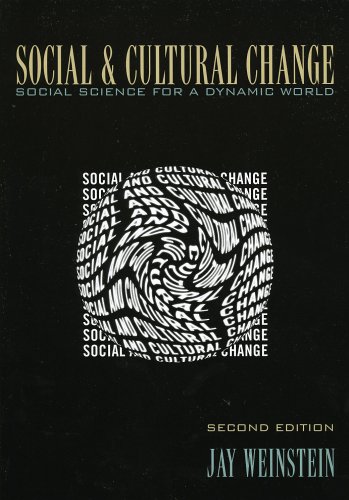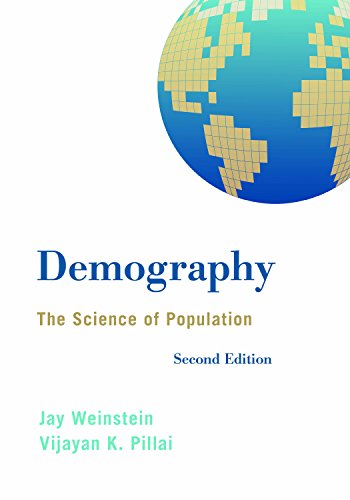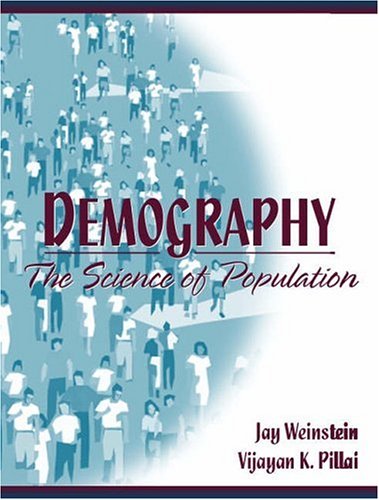Background
Weinstein, Jay A. was born on February 23, 1942 in Chicago, Illinois, United States. Son of Lawrence E. and Jacqueline L. Weinstein.


(The rate of social change today—as well as the geographic...)
The rate of social change today—as well as the geographic reach of its effects—is unprecedented in human history. People throughout the world are experiencing both more (and more intense) intergroup unity and more and (more intense) intergroup conflict. The activities of millions of individuals are now routinely coordinated to achieve specific, predetermined goals in government, the private sector, and in international relations. At the same time, such a high degree of control also carries the ever-present danger that things can become out of control in new and dangerous ways or fall under the control of the wrong people. Social and Cultural Change is about these momentous and relatively recent changes in the human condition. The book brings the concepts and principles of social science to bear in an examination of (1) the major causes and conditions underlying our current situation; and (2) the main choices and options we face as we strive to shape our collective futures. The book consists of fifteen chapters, divided into five parts. The parts are ordered cumulatively, with the earlier chapters focusing on concepts and principles and the later ones applying these in specific contexts.
http://www.amazon.com/gp/product/0742525740/?tag=2022091-20

( This comprehensive, introductory text takes an applied,...)
This comprehensive, introductory text takes an applied, interdisciplinary approach. Because one author is a sociologist and the other a demographer, the text introduces perspectives from many different disciplines. The most applied book on the market, Demography: The Science of Population teaches students how to use the multitude of demographic resources available to them as consumers of data. Using case studies throughout to illustrate key concepts in a realistic and concrete manner, the authors also draw examples from recent U.S. Census data, United Nations and World Bank reports, tables from the National Center for Health Statistics, and other U.S. state- and county-level sources. New to the Second Edition This second edition is divided into four main parts; each part begins with a short introduction, and all chapters include end-of-chapter summaries. All tables, related narrative, and graphics have been updated to include data from the 2000 and 2010 census counts, more recent estimates for the United States—especially the American Community Survey—and comparable new data from international sources (e.g. World Bank, Population Research Bureau World Data Sheet ). Several new figures have been added throughout the text. Part I : An Overview of Population Science, introduces the field of demography and provides a summary of its subject matter. The chapters in this part have been reorganized to reflect changes in the discipline. • Chapter 1 now includes a new “the study of populations” section, a shorter Chapter 2 covers population size, and its former discussion of structure has been moved to Chapter 3. This de-emphasizes the history of population science to some extent and increases emphasis on population size as the key demographic variable. • Chapter 4 presents the main principles and analytical techniques associated with the three “static” characteristics of populations: size, structure, and geographic distribution. Part II: Population Dynamics: Vital Events and Growth, reflects the wealth of data and analytical techniques now available from The U.S. Centers for Disease Control and Prevention (CDC) and its “Wonder” utility. The first three chapters focus on the vital events of birth, death, and migration. The final chapter in this part brings this material together in a discussion of population growth: its measurement, its history, and current related policy concerns. Part III: Population Models, introduces the principles of life table analysis, population estimation, and projection. This material has been simplified and updated. Chapter 9, The Life Table: An Introduction , has been revised to accord with the new federal alignment for vital statistics between the CDC and National Institute for Health Statistics. Life tables from non-U.S. sources are increased in number and in detailed functions. Part IV: Demography in Application , provides overviews of population policy, the environment, and demographic resources, along with a brief postscript on population in the larger scheme of things. What appeared as two appendices in the first edition, one on the history of population policy and one on tourism as a type of international migration, have been combined to create a new Chapter 14. The end-of-chapter material has been shortened and now contains a summary, key terms, and notes. A full-color enhanced eText is also available, and the second edition is accompanied by a teaching and learning package, including instructor’s manual, test bank, lecture slides, and a companion website that offers students additional resources, flashcards, and self-study quizzes.
http://www.amazon.com/gp/product/1442235195/?tag=2022091-20

( A comprehensive book that emphasizes the major techniq...)
A comprehensive book that emphasizes the major techniques, methods, and data sources of contemporary population studies. Written by a sociologist and a demographer, the book's principal aim is to improve the students' skills primarily as consumers and secondarily as producers of demographic information. One reviewer says, "The author has a pleasant style. It is the voice of knowledge combined with a gentle voice of teaching." He goes on to say of the book, "It is really unique and refreshingly original. It is comprehensive and comprehensible." -Ron Hammond, University of Utah. The book takes an applied interdisciplinary approach, emphasizing demographic resources such as software, data sets, journals, and the Internet. For anyone interested in population studies.
http://www.amazon.com/gp/product/0205283217/?tag=2022091-20
researcher social sciences educator
Weinstein, Jay A. was born on February 23, 1942 in Chicago, Illinois, United States. Son of Lawrence E. and Jacqueline L. Weinstein.
AB, University of Illinois, 1963; Doctor of Philosophy, University of Illinois, 1973; Master of Arts, Washington University, St. Louis, 1965.
Teaching fellow University Illinois, Urbana, 1963-1964. Teaching assistant McGill University, Montreal, Canada, 1966-1968. Instructor Sir George Williams University, Canada, 1967-1968.
Lecturer Simon Fraser University, Vancouver, Canada, 1968. Assistant professor North Central College, Naperville, Illinois, 1970-1971, University Iowa, 1973-1977. Professor social science Georgia Institute of Technology, Atlanta, 1977-1986.
Head department sociology Eastern Michigan University, 1986-1990, 2004—2006, faculty research fellow, 1990-1991. Grantee educational development project United States Information Agency-Soros Foundation, Albania, since 1992. Director Applied Research Unit, since 1996.
Visiting faculty, sociology University North Florida, since 2007. Consultant World Bank Study Social and Economic Vulnerability in Albania, 1997, World Bank Study on Closing the Vulnerability Gap, Albania, 1997—1998. Project director Eastern Michigan-U-Ypsilanti Community Outreach Partnership Center.
Consultant private public agencies. Researcher in field.
( This collection of the writings of Louis Schneider, an ...)
( A comprehensive book that emphasizes the major techniq...)
(The rate of social change today—as well as the geographic...)
( This comprehensive, introductory text takes an applied,...)
(Book by Weinstein, Jay A.)
Member American Sociological Association (president 2002-2003), Society for Applied Sociology (vice president 1998-1999, chair sociological practice section, 2004-2005), member executive board 2000, president 2002-2003), Michigan Sociological Association (president 1988-1989, vice president 1994-1995), North Central Sociological Association (president 2007-2008, John F. Schnabel award for teaching excellence), Sigma Xi, Phi Kappa Phi.
Married Diana S. Staffin, September 16, 1961. Married Marilyn L. Schwartz, November 25, 1972. Children— Liza, Bennett.
